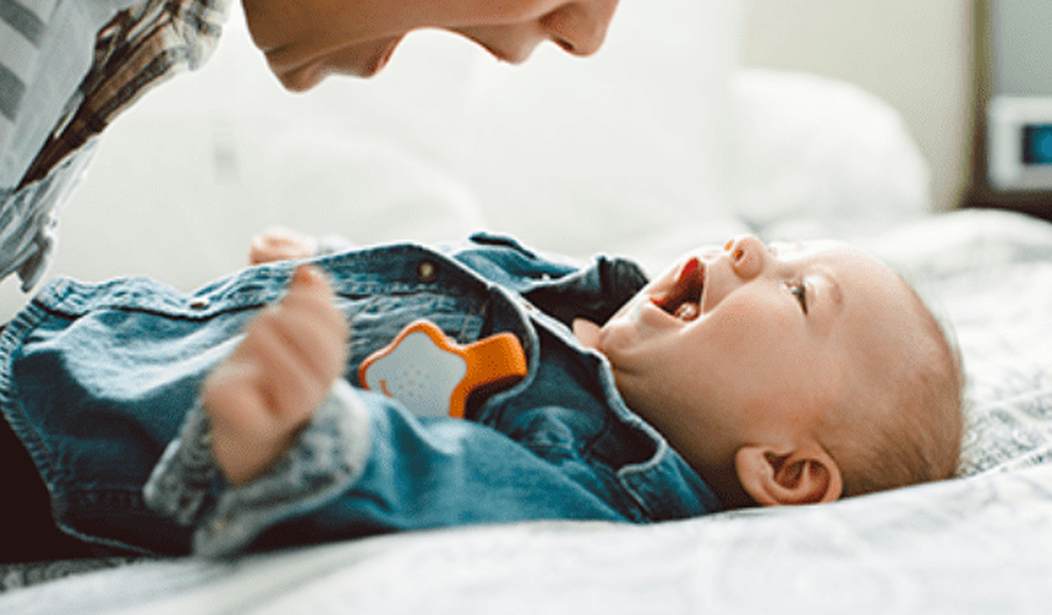When children are born, there are countless things new parents worry about. At first, many people focus on material items that will make the baby comfortable — a crib, stroller, teething toys, onesies, baby bath, soothing lotion, night lights — the list from any new mom’s baby registry can seem endless. As the child grows, other things become more important, like educational toys, music classes, and sufficient exercise.
But if you had to guess the single most important thing you could provide for your baby, what would it be? Beyond the basics of a loving, stable, nurturing environment, the best thing that you can give your young child is the gift of language. According to “The Power of Talking to Your Baby” in the New York Times,
…the key to early learning is talking — specifically, a child’s exposure to language spoken by parents and caretakers from birth to age 3, the more the better. It turns out, evidence is showing, that the much-ridiculed stream of parent-to-child baby talk — Feel Teddy’s nose! It’s so soft! Cars make noise — look, there’s a yellow one! Baby feels hungry? Now Mommy is opening the refrigerator! — is very, very important.
The impact of language on babies and toddlers is so substantial that a lack of sufficient communication over time can lead to a lifetime of deficits. We see the result of a wealth (or dearth) of language in the two ends of the socioeconomic spectrum.
Children whose families were on welfare heard about 600 words per hour. Working-class children heard 1,200 words per hour, and children from professional families heard 2,100 words. By age 3, a poor child would have heard 30 million fewer words in his home environment than a child from a professional family. And the disparity mattered: the greater the number of words children heard from their parents or caregivers before they were 3, the higher their IQ and the better they did in school. TV talk not only didn’t help, it was detrimental.
The more we speak to our children, the more they learn, the higher their IQ will be, and the more they will be able to thrive as they grow. But just how much are we talking to our kids? In an age where so much communication happens silently through smartphones and computers, are we taking the time to actually speak to our children? Are their caregivers? It can definitely feel tedious to narrate every activity throughout the day — especially with a small baby who can’t respond. But that is exactly what a little brain needs in order to develop. How much do our children need to hear every day to ensure that they won’t fall behind?
Three entrepreneurs who met at Stanford have created a product that addresses this very issue. Their company is called VersaMe, and their pilot project is the Starling. FreeEnterprise.com conducted an interview with one of the founders of VersaMe:
Started three years ago by [Nicki] Boyd and two military veterans-turned-entrepreneurs, VersaMe has developed a mini Fitbit-like device that counts not steps or calories but rather the number of words parents utter around their infants or young children. The wearable technology uses the resulting data to encourage moms and dads to talk, read and even sign as much as possible around their little ones.
“We have a mission to help all children fulfill their potential in life,” said Boyd, who launched the Silicon Valley startup alongside brothers Chris and Jon Boggiano. “That’s really at the heart of everything we do.”
The Starling is about the size of a pacifier and clips easily onto the clothing of a child (or the stroller strap, etc.) and “counts” the words it hears (but it doesn’t record anything). The device is operated through an app on a smartphone. When a parent opens the app, the device syncs and provides an up-to-date word count for the day. The Starling app also provides “tips and activities to keep you talking,” according to its website. As an example, the app might encourage you to point out the colors of flowers you see, or parts of the body as you get the baby dressed. The idea is that you are constantly engaging with your little one — resulting not only in stronger verbal skills, but a stronger bond between you as well.
If you are concerned that your child might not be exposed to enough language, or if you just aren’t sure, the Starling could help provide the little boost that she needs to reach her potential.
Watch the video below to learn more about the Starling:









Join the conversation as a VIP Member